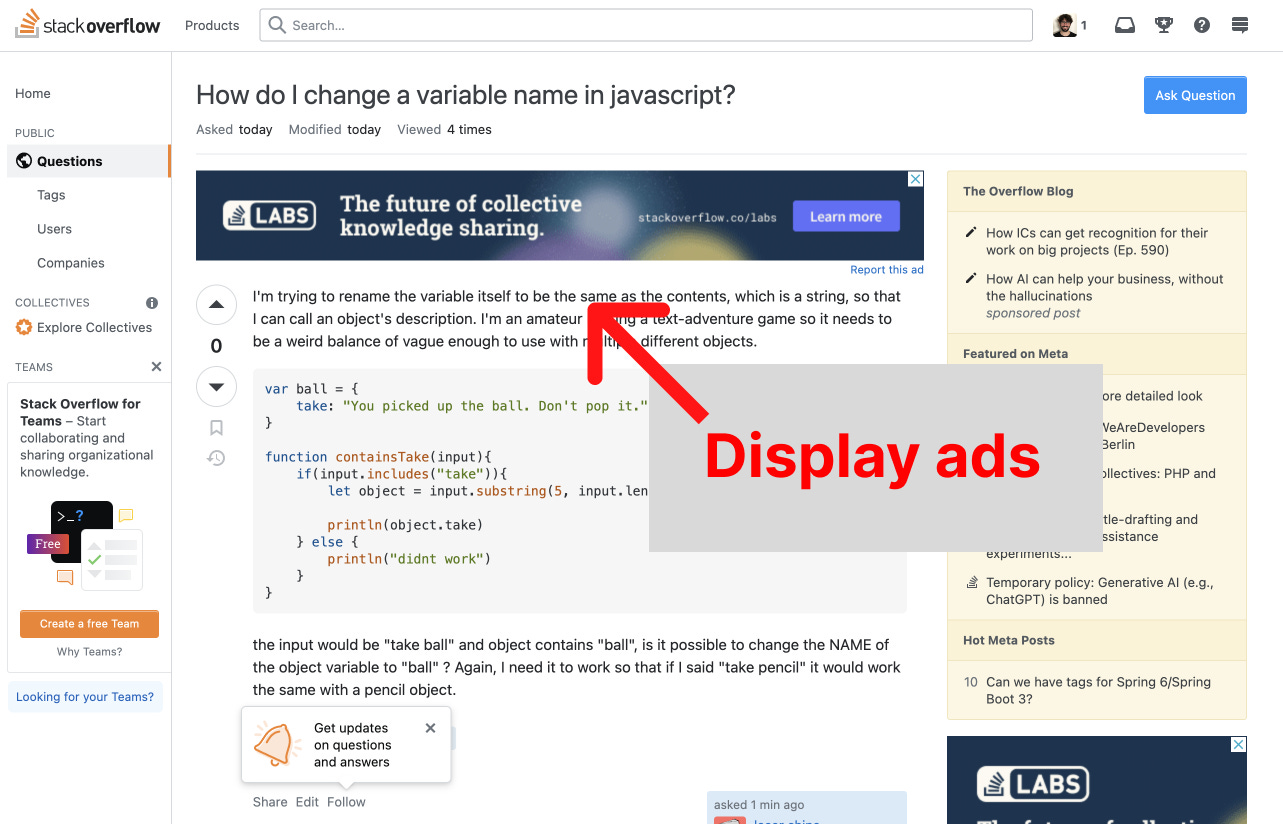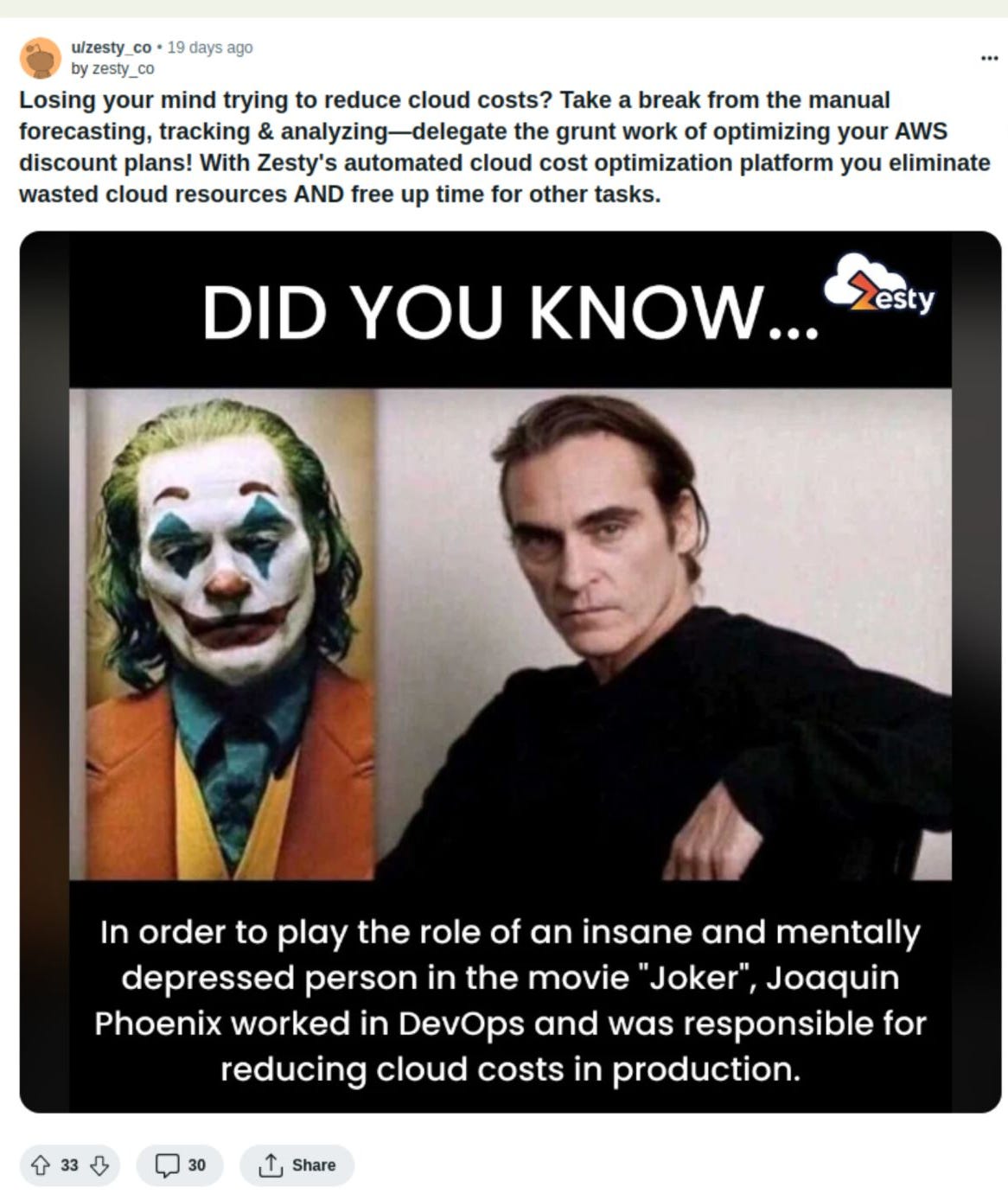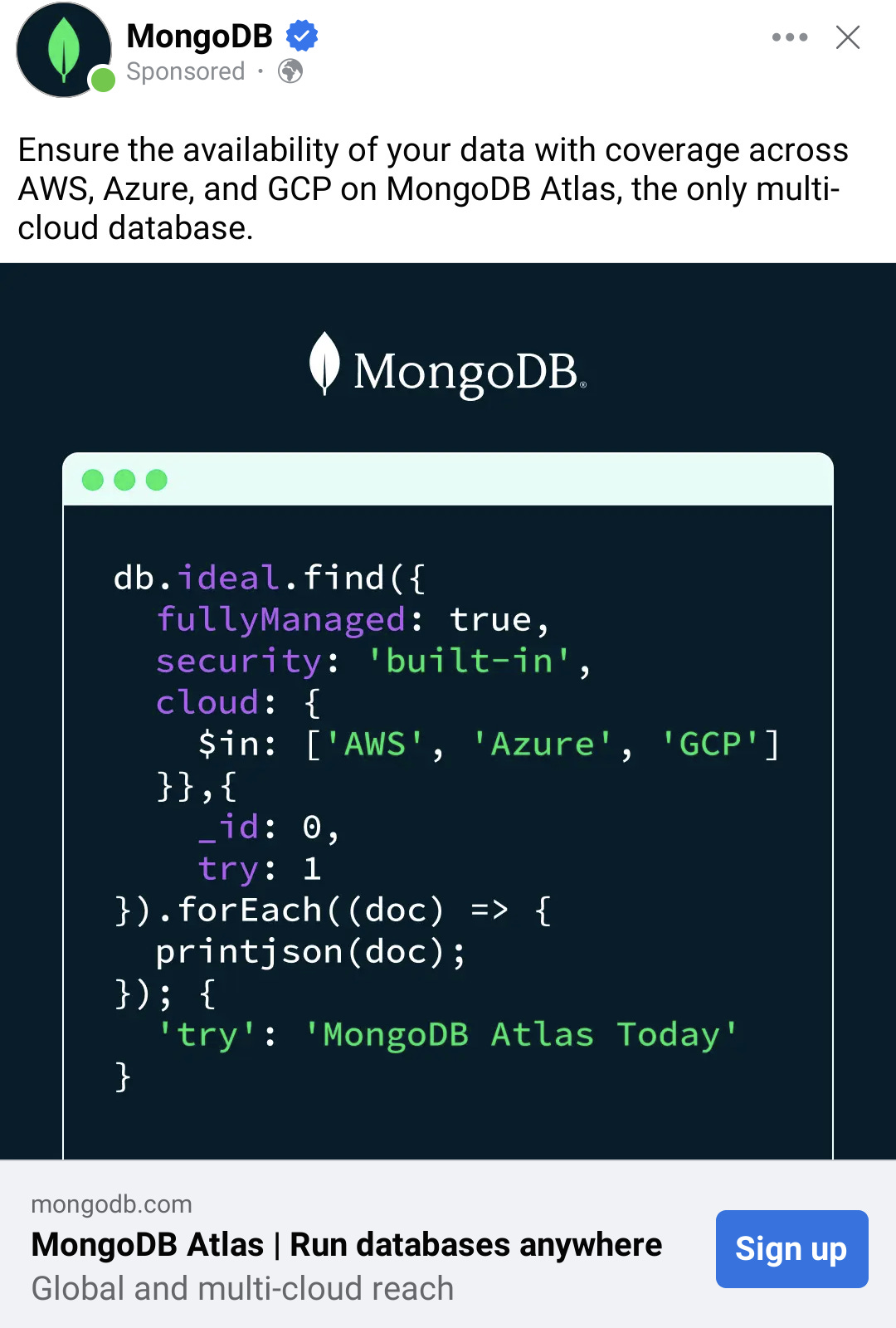Ad targeting for developer-focused startups
Linkedin and Google Search are the most popular demand generation channels for B2B SaaS because of how easy they make ad targeting.
You're a cyber security company selling a tool to find container vulnerabilities. Both LinkedIn and Google Search offer great targeting options: On LinkedIn, you target CISOs by title, on Google Search, you target keywords such as CSPM or CNAPP.
Easy.
Things get a little more complicated when it comes to developer-focused companies. Developer-focused companies are basically B2B companies, but they're a special sort of B2B, so the generic playbook probably won’t work:
As I previously wrote here, LinkedIn does not make sense for developer-focused companies since these are often product-led, and it is difficult to make Linkedin effective for product-led growth.
For developer-focused companies, Google Search can be useful, but only if there's already a demand for your product category. You can't really succeed with Google Search if you're creating a new product category.
Because of this challenge (as well as the perception that ads don't work on developers, which I tried to overcome here), many early-stage developer-focused startups avoid paid ads in favor of less scalable channels like content marketing and community engagement.
This is a big mistake, especially for VC-backed startups. These startups were given millions so that they could grow as fast as possible. That means they can't afford to give up on paid advertising, the most scalable marketing channel there is.
Instead, they should figure out how to make paid ads work, and it starts with nailing down targeting.
Common solutions
A common solution is to advertise on developer-focused sites like StackOverflow. You can also advertise on developer-focused blogs and newsletters through services like Ethical Ads and Carbon Ads.
The reason I don't like this option is because these are basically display ads. Display ads don't work simply because they look and feel like ads, and we know very well to ignore those (plus, ad blockers eliminate them entirely).
This is different from social media advertising. When you see an Instagram ad, it initially appears like just another post on the feed, which prevents ad blindness. The same goes for Google Search: Many people can't tell which results are organic and which are paid.
For this reason, Reddit has the potential to be more effective than Stackoverflow, Ethical Ads, and Carbon Ads. Reddit is a social network, which means ads there look just like regular posts.
There is just one problem: Reddit's users hate advertising. This doesn't mean Reddit ads don't work, but it does mean you will have to be very strategic with your creatives (more details below).
Using remarketing audiences is another popular option. This involves targeting users who have visited your website before or interacted with your social media pages. But keep two things in mind when using this strategy:
No matter how many blog visitors you get every month, it still doesn't compare to the scale you can reach by targeting prospecting audiences (i.e., users who don't yet know your brand).
When it comes to attribution, it can be tricky. If you start advertising on Instagram with a remarketing audience, the advertising platform will certainly report a lot of signups, but many of those would have converted anyway.
Creative is the new targeting
All of the above options are certainly worth trying, but I think that engaging creatives are the real answer.
"Creatives? Aren't we talking about targeting?" you say.
We are, but in 2023, creative is the new targeting.
Think about it this way: you want 1 click per 100 people who see your ad. How can you do that?
In the past, the answer has always been to optimize your targeting to reach users who are more inclined to click on your ads. For example, if you're a cyber security company, you should optimize your target audience so it contains as many CISOs as possible.
With privacy restrictions tightening, doing so has become increasingly challenging, whether you sell eyeliner or data observability tools.
Nowadays, your audiences are likely to be a mess. In that sense, online advertising has become increasingly similar to offline advertising, where you throw a large net in the hope that you catch a fish somehow relevant to your brand.
And yet, you still want that for every 100 people who see your ad, 1 person will click it, right? So, if you can’t target an audience that is more inclined to click on your ads, you should create ads that are more enticing to click on.
Simply put, it's pretty likely that there are very few people in the audiences you target who are relevant to your brand. Making your creatives more appealing will increase the chances that those few will interact with it.
Additionally, creating engaging creatives means the advertising platform has more signals to use. If you use a funny meme as a creative and it draws in your target audience and makes them hit the "like" button, it signals the ad platform which of their users are relevant to your brand.
Developer-friendly creatives
When you take a creative-first approach to online advertising, targeting developers isn't as hard as it seems. You can use traditional channels like YouTube and Instagram and still manage to do so.
All you need is incredible creatives that will resonate with developers.
At Datree, we used tutorials as creatives: influencers created tutorials on Datree, and we distributed them via Youtube ads.
There are two reasons why this worked:
We're not calling them to sign up for the product, we're calling them to watch a video. It's much easier getting developers to click on a link to a tutorial than a sign-up form.
Using community leverages social proof right into your ads, increasing the chances that they will be well received. Some tutorials were produced by Datree's own staff, but the most successful ones came from influencers.
However, tutorials aren't the only option.
Using memes can work really well. Just make sure they're also relevant to what you're selling. Here's an example that Jakub Czakon posted in Linkedin:
Jakub mentions it got really positive responses on Reddit, so perhaps it's also a way to bypass Reddit's hate for advertising.
Using code as an ad has also worked great for me in the past. This ad from MongoDB executes this well. Note that (a) the code is very readable and (b) it is very relevant to the product, since it demonstrates the functionality of non-relational databases:






